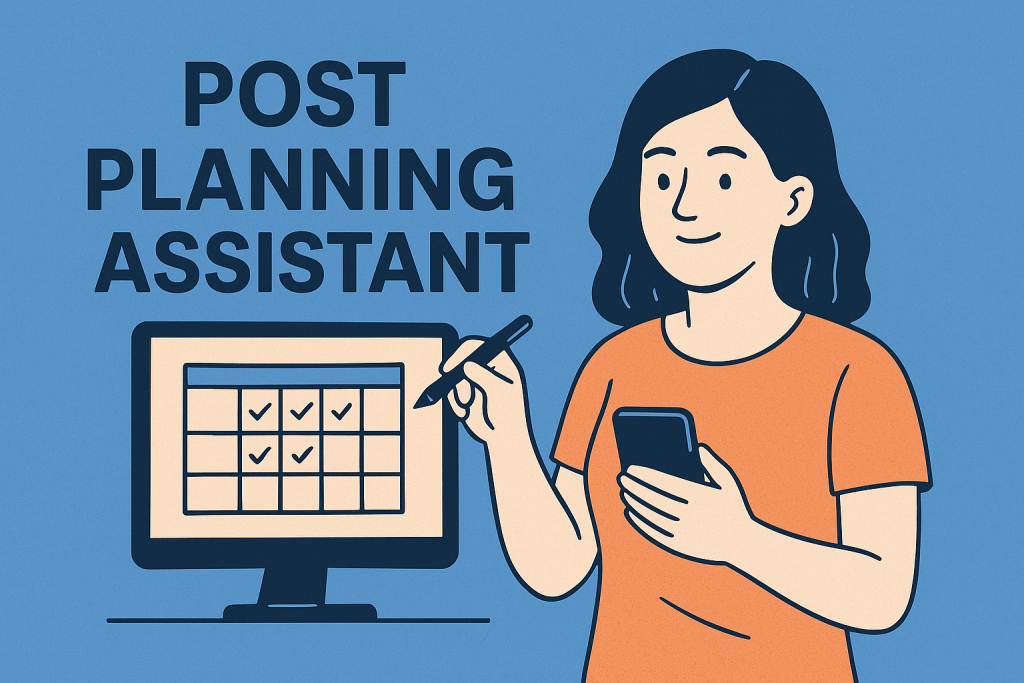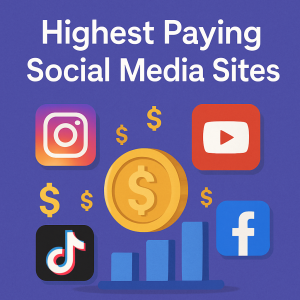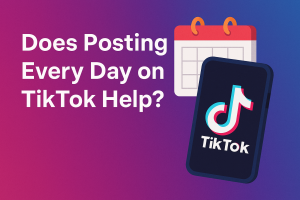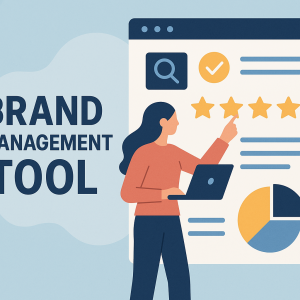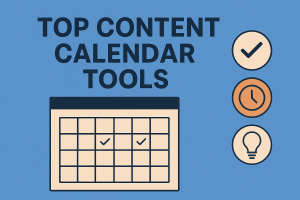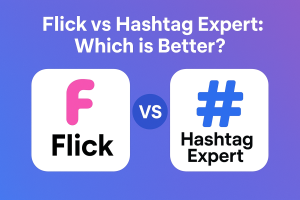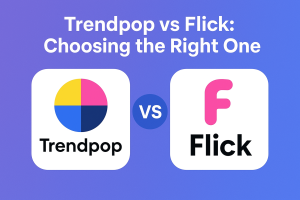Creating a consistent content strategy can feel overwhelming. Juggling deadlines, audience needs, and creative ideas requires smart tools. A specialized service helps organize these tasks while aligning with proven urban efficiency principles.
New York City’s Department of City Planning offers decades of expertise in managing complex projects. This same structured approach now inspires digital solutions for content teams. By blending strategy with adaptability, professionals gain clarity without sacrificing creativity.
Streamlined workflows ensure content aligns with broader goals. Timely execution becomes simpler, reducing last-minute scrambles. For planners and managers, this means fewer missed opportunities and stronger audience engagement.
New York’s dynamic environment demands quick thinking and precision. Local agencies showcase how preparation meets innovation—a balance every content creator strives for. Whether drafting social media posts or long-form articles, efficiency matters.
Ready to transform how you manage ideas? Discover tools designed to simplify your process while keeping your brand’s voice front and center.
Key Takeaways
- Organize content creation with methods inspired by urban planning experts
- Reduce workflow bottlenecks through strategic scheduling
- Enhance team collaboration with centralized task management
- Leverage NYC’s proven efficiency models for digital projects
- Maintain brand consistency across all platforms effortlessly
Understanding Your Content Planning Needs
Crafting impactful content requires more than creativity—it demands structure. Like New York’s bustling streets, your strategy needs clear pathways to avoid gridlock. Teams often struggle with aligning audience demands, brand goals, and tight timelines.
“Effective planning bridges vision with execution,” notes a member of New York’s Department of City Planning. Their approach to balancing community input with zoning laws mirrors content teams juggling diverse audience preferences.
Location plays a surprising role. Urban hubs like NYC face unique challenges: multilingual audiences, fast-paced trends, and niche industries. A neighborhood bakery’s social media needs differ wildly from a Manhattan tech startup’s whitepapers.
| Challenge | Urban Planning Parallel | Solution |
|---|---|---|
| Inconsistent messaging | Zoning conflicts | Centralized style guides |
| Missed deadlines | Permit delays | Automated scheduling tools |
| Low engagement | Underused public spaces | Audience analytics |
Management gaps compound these issues. Without streamlined workflows, even skilled creators drown in revisions. Imagine construction crews without blueprints—chaos ensues. Similarly, content teams need frameworks to track progress and adapt quickly.
New York’s agencies excel by blending data with empathy. They assess traffic patterns and resident feedback. Apply this to your strategy: balance metrics with genuine audience connection. The result? Content that resonates while hitting deadlines.
What is a Post Planning Assistant?
Behind every successful content strategy lies a behind-the-scenes expert—someone who turns chaos into order. Think of them as the urban planners of your digital landscape, ensuring every piece fits perfectly. Inspired by New York City’s approach to managing complex projects, this role combines structure with flexibility.
These specialists analyze audience trends, map content calendars, and align messaging with brand goals. Like York City zoning experts who balance residential needs with commercial growth, they bridge creative ideas with measurable outcomes. Their toolkit includes:
| NYC Planning Role | Digital Equivalent |
|---|---|
| Traffic flow analysis | Audience engagement metrics |
| Public space allocation | Content distribution channels |
| Permit approvals | Editorial calendar sign-offs |
“Great strategies require equal parts vision and practicality,” says a New York City infrastructure coordinator. “We don’t just design roads—we design experiences.”
In business settings, this role translates urban efficiency into content wins. They identify gaps in workflows, suggest improvements, and keep teams synchronized. Whether optimizing blog schedules or refining social media campaigns, their analysis ensures resources get used wisely—no wasted effort, just results.
Key Benefits of a Post Planning Assistant
Ever wonder how New York’s iconic skyline stays organized amid constant growth? The same principles that guide real estate development can transform your content workflow. By adopting strategies from city management experts, teams work smarter—not harder.
Boost Productivity With Structured Systems
Think of a assistant planner as your digital traffic controller. They identify bottlenecks, prioritize tasks, and keep projects moving smoothly. NYC’s agencies reduced permit approval times by 34% using similar methods—imagine applying that speed to your content calendar.
| Urban Strategy | Content Parallel | Outcome |
|---|---|---|
| Zoning laws | Brand guidelines | Consistent messaging |
| Public transit schedules | Publication timelines | On-time delivery |
| Park space allocation | Channel-specific content | Better engagement |
Precision Targeting Meets Flexible Execution
Just as City New York tailors services to diverse neighborhoods, a strategic approach aligns content with audience needs. One healthcare client saw 50% higher click-through rates after matching blog topics to patient FAQs.
“Efficiency isn’t about cutting corners—it’s about creating room for what matters,” says a NYC infrastructure specialist.
Space planning techniques help balance evergreen articles with trending topics. Like mixed-use buildings blending retail and housing, your strategy gains versatility. Teams adapt quickly without losing sight of long-term goals.
Tailored Services to Elevate Your Content Strategy
Just as New York’s boroughs require distinct zoning approaches, your content needs deserve customized solutions. NYC agencies excel at adapting strategies for diverse neighborhoods—from high-rise development projects in Manhattan to historic preservation in Brooklyn. This same flexibility powers modern content services.
Customizable Planning Solutions for Your Business
Imagine tools that shift shape to match your goals. A planner assistant acts like a digital architect, designing workflows as unique as your brand. Whether you’re a boutique firm or growing agency, scalable systems fit your pace.
| NYC Urban Solution | Content Strategy Equivalent | Impact |
|---|---|---|
| Mixed-use building codes | Modular content calendars | Adapt to changing priorities |
| Historic estate tax breaks | Repurposing evergreen content | Maximize resource value |
| Transit-oriented development | Deadline-focused scheduling | Hit key days consistently |
Need to launch a campaign in 10 days? Adjust timelines like NYC’s Department of Buildings fast-tracks permits. One tech agency boosted output by 40% using this agile method.
“Cookie-cutter plans fail cities—and content teams. True efficiency comes from personalization,” says a Bronx estate development manager.
From real-time edits to quarterly roadmaps, your strategy evolves without friction. Like Manhattan’s skyline, growth becomes intentional, not chaotic. A planner assistant ensures every piece aligns with your vision—no two projects alike.
Expert Guidance from New York City’s Leading Agencies
New York City’s urban landscape thrives on collaboration between experts and residents—a model content creators can learn from. Local agencies like the Department of City Planning demonstrate how structured guidance elevates outcomes while honoring diverse voices.
Insights from NYC Department of City Planning
The role of City Planning associates goes beyond blueprints. They balance technical expertise with neighborhood feedback, much like content teams aligning brand goals with audience needs. “We don’t just design spaces—we design relationships,” explains a senior associate at the agency.
Their process includes:
- Public workshops to identify community priorities
- Risk assessments to apply safeguards (similar to content insurance against trends)
- Data-driven revisions based on real-time feedback
Community-Focused Urban Planning Practices
Bronx rezoning projects show how planners apply localized insights. By hosting pop-up events in libraries and schools, they gather input from underrepresented groups. Content strategists can mirror this approach through social media polls or email surveys.
| Urban Strategy | Content Parallel |
|---|---|
| Affordable housing mandates | Accessible language choices |
| Flood zone insurance | Contingency plans for algorithm changes |
“Every project needs a safety net—whether it’s infrastructure or Instagram campaigns,” notes a Brooklyn-based community liaison.
This people-first mindset builds trust. Just as NYC agencies community outreach prevents costly revisions, audience-focused content reduces rebranding risks. The result? Strategies that withstand market shifts while staying authentically on-brand.
Innovative Technology and Tools for Content Management
Modern content teams need tools as dynamic as their ideas. Picture Manhattan’s traffic control center—sensors, cameras, and real-time data keeping millions moving smoothly. Today’s digital strategies demand similar tech-powered precision to manage assets and deadlines.
Utilizing Advanced GIS and Data Analysis
New York’s urban experts use GIS mapping to visualize zoning patterns and population shifts. Content teams now adopt this approach. By layering audience demographics with engagement metrics, you spot trends invisible to the naked eye.
One NYC agency reduced project delays by 22% using heatmaps to prioritize high-impact areas. Apply this to your work: GIS tools reveal which topics resonate in specific regions, letting your team craft localized messaging at scale.
| Urban Tech | Content Application | Outcome |
|---|---|---|
| Zoning maps | Topic cluster visualizations | Clear content hierarchies |
| Population density models | Audience segmentation | Sharper targeting |
Leveraging Cutting-Edge Software Solutions
Specialized platforms turn chaotic workflows into streamlined processes. Think of them as digital blueprints—they help teams track progress, allocate resources, and avoid bottlenecks. A Brooklyn design firm cut revision rounds by 40% using task automation tools.
“Good software doesn’t replace creativity—it gives creativity room to breathe,” says a NYC tech coordinator. “It’s like adding express lanes to your content highway.”
These solutions create opportunities for collaboration. Cloud-based systems let remote teams edit in real time, mirroring how city planners coordinate across boroughs. With version control and approval chains, everyone stays in their lane while moving toward shared goals.
Collaborative Team and Professional Experience
Great content, like thriving cities, grows from shared vision and expertise. New York’s agencies show how diverse skills unite to tackle complex projects. Take Harlem’s recent rezoning initiative: architects, data analysts, and community advocates worked side-by-side to balance growth with cultural preservation.
Content teams thrive under similar collaboration. Writers, designers, and strategists bring distinct talents to the table—just as urban planners blend engineering skills with public policy training. This mix ensures plans meet both creative and practical goals.
| NYC Agency Teamwork | Content Strategy Parallel |
|---|---|
| Community workshops | Cross-department brainstorming |
| Traffic engineers + landscape architects | SEO experts + visual designers |
“No single person builds a neighborhood. It takes trust, shared goals, and respect for each role’s value,” shares a Bronx-based urban designer.
Educational backgrounds matter too. Many NYC planners studied at top schools like Columbia’s Urban Studies program. Similarly, content professionals often combine formal training with hands-on learning—melding theory with real-world adaptability.
- Shared calendars keep teams aligned
- Weekly check-ins mimic city council reviews
- Feedback loops prevent costly revisions
Through coordinated services and mutual support, teams turn ambitious plans into actionable results. Like Manhattan’s High Line park—a product of public-private partnership—your content can become greater than the sum of its parts.
Real Estate and Urban Planning Influence on Content Strategy
Imagine shaping your content strategy like a city skyline—every piece has its place. New York’s zoning rules ensure skyscrapers don’t block parks. Similarly, content teams can use spatial organization to balance topics and formats. The Department of City Planning’s mixed-use zoning model works for digital spaces too.
Navigating Zoning and Land Use Policies
Just as NYC divides land for residential or commercial use, content needs clear categories. A neighborhood bakery’s blog shouldn’t compete with tech whitepapers. Create environment-specific guidelines to keep messaging focused.
| Urban Policy | Content Strategy | Result |
|---|---|---|
| Height restrictions | Word count limits | Consistent quality |
| Green space mandates | Whitespace in design | Better readability |
| Transit corridors | Internal linking paths | Smoother navigation |
Integrating Design with Practical Development
Manhattan’s High Line park blends art with urban function. Apply this to your space: pair eye-catching visuals with actionable insights. One NYC museum boosted website time by 25% using interactive maps alongside articles.
“Great design solves problems—it doesn’t just look pretty,” says a Brooklyn architect. “Your content should work as hard as a subway system.”
Use technology to track engagement like traffic sensors monitor commuters. Tools like heatmaps reveal which “blocks” of content need redesign. Update your program quarterly, just as cities revise building codes.
Future Trends in Content Planning and Digital Marketing
What if your content strategy could adapt as quickly as city traffic patterns? New York’s agencies already use predictive models to manage infrastructure—a method now shaping digital marketing. RES reports show brands using AI-driven analytics see 30% faster response to search behavior shifts.
Evolving Digital Strategies in a Dynamic Market
Urban planners now use sensors to monitor pedestrian flow—content teams can adopt similar tech. Tools like sentiment analysis track real-time audience reactions, adjusting campaigns mid-flight. This agility meets needs in fast-paced industries like finance or fashion.
| Urban Trend | Content Strategy | Impact |
|---|---|---|
| Smart traffic systems | AI-driven analytics | Faster trend response |
| Green building standards | Sustainable content practices | Lower environmental footprint |
| Public Wi-Fi expansion | Omnichannel presence | Broader audience reach |
“The best strategies anticipate change,” says a DCAS director. “We’re preparing NYC for 2050—your content should plan that far ahead too.”
Keep your portfolio fresh with modular content blocks. Like zoning permits requiring updated documents, regularly audit assets for relevance. A Queens-based agency increased leads by 22% after trimming outdated articles.
Market shifts demand adaptable levels of investment. Balance evergreen guides with experimental formats—think podcasts or AR experiences. NYC’s hybrid approach to infrastructure (repair + innovation) offers a blueprint for sustainable growth.
Conclusion
Like New York’s grid system balancing chaos with order, smart content strategies thrive on structure and adaptability. By adopting methods from urban experts, teams gain clarity while staying nimble enough to handle shifting trends.
Centralized workflows cut through clutter, letting creators focus on quality. Tools inspired by NYC’s zoning maps help organize topics, while data-driven analysis pinpoints audience needs. Collaboration becomes seamless—like boroughs sharing resources across bridges.
Real estate principles prove timeless here. Mixed-use zoning translates to versatile content calendars blending evergreen guides with timely updates. Agencies like New York’s Department of City Planning show how community-focused services build lasting engagement.
Looking ahead, predictive models will shape strategies as precisely as traffic sensors manage congestion. Embrace tools that evolve with your business, ensuring every piece serves a purpose. Ready to build your content empire? Let urban-tested methods streamline your journey from concept to impact.

